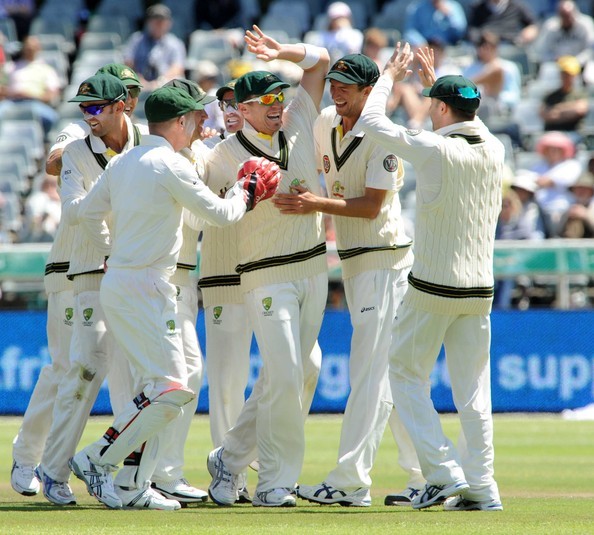Monday Milestone: Bodyline
“And staid Adelaide nearly boiled over as rage ruled over sense
When Oldfield hit the ground, they nearly jumped the fence”
– Paul Kelly, ‘Bradman’
This Week in History:
1933, January 14
Australia is bounced out of the Adelaide Test at the height of the Bodyline series.
I sat at the
The origins of this restriction stem from back the infamous 1932-33 Ashes series set against the backdrop of the Great Depression.
The English had come to Australia with a single goal: stop Donald Bradman. He’d picked apart the English attack in the previous Ashes series. They needed something. After examining footage, they had decided Bradman’s weakness was the short ball. English captain Douglas Jardine, untroubled by his poorly received reputation in Australia for his superior attitude, decreed his bowlers would use the ‘fast leg theory bowling’ tactic: peppering short balls at the body on leg stump, then stacking the field with a leg side cordon for the nearby catch.
Bodyline was born.
During the first Test in Sydney the tactic worked well, (perhaps in part due to the absence of Bradman), but when the Don notched an unbeaten century in the second Test in Melbourne, doubts were raised over the effectiveness of this new tactic.
Undeterred Jardine persevered with Bodyline, continuing to send down a barrage of short balls in the Third Test in Adelaide, angering the crowd, and the Australian team.
While many may think in this era, this isn’t so different, and doesn’t seem so difficult, remember these guys played on uncovered pitches and without protective gear. It was frighteningly dangerous. Bert Oldfield’s skull was fractured. Bill Woodfull was hit above the heart by a Larwood bouncer. With Woodfull bent over, clutching his chest in agony, Jardine was heard to call out ‘Well bowled Harold’ and calmly reset another Bodyline field. Little wonder Australia players and fans were outraged, for the remainder of the Adelaide Test and the rest of the series that of course England went on to win.
I guess ultimately Bodyline achieved its goal. Bradman only averaged a relatively paltry 56.57. But this series was much bigger than that. The laws were subsequently changed, (hence the warning to Peter Siddle the other day), cricketing history was rewritten, and the outrage still remains engrained in the Australian culture. Such disregard for player welfare created the most heated series in Ashes history, as was so famously noted by Bill Woodful as he left the Adelaide Oval that day in 1933, appalled.
Whether it was Donald Bradman or Jack Fingleton that leaked his famous quote will never be fully known. But here at the Milestone, when a side actively invokes such tactics to injure their opponent, to win at all cost, it's not on. Woodful was right. That summer at the Adelaide Oval in 1933, there were indeed two sides out there. One of them was playing cricket. The other was making no attempt to do so.
The Milestone Five: Significant moments during the Bodyline series
5. Sydney: Harold Larwood takes match figures of 10/124 using the fast leg theory tactic successfully.
4. Melbourne: Donald Bradman returns from an absence and scores an unbeaten century prompting the Australian media to question the effectiveness of Bodyline.
3. Sydney: Stan McCabe plays the most astonishing innings defying Bodyline bowling, at great risk to his own welfare to finish unbeaten on 187.
2. Adelaide: Bert Oldfield leaves the ground unconscious with a fractured skull after being struck on the head by a Larwood delivery.
1. Adelaide: Bill Woodfull is hit above the heart in, writhes in agony, and continues to face a Bodyline assault, seen by many as being kicked when he is down. Yet heroicly plays on, carrying his bat with 73 not out, prompting his famous quote.
With thanks to Gallo Images/Getty Images Europe for the photo

